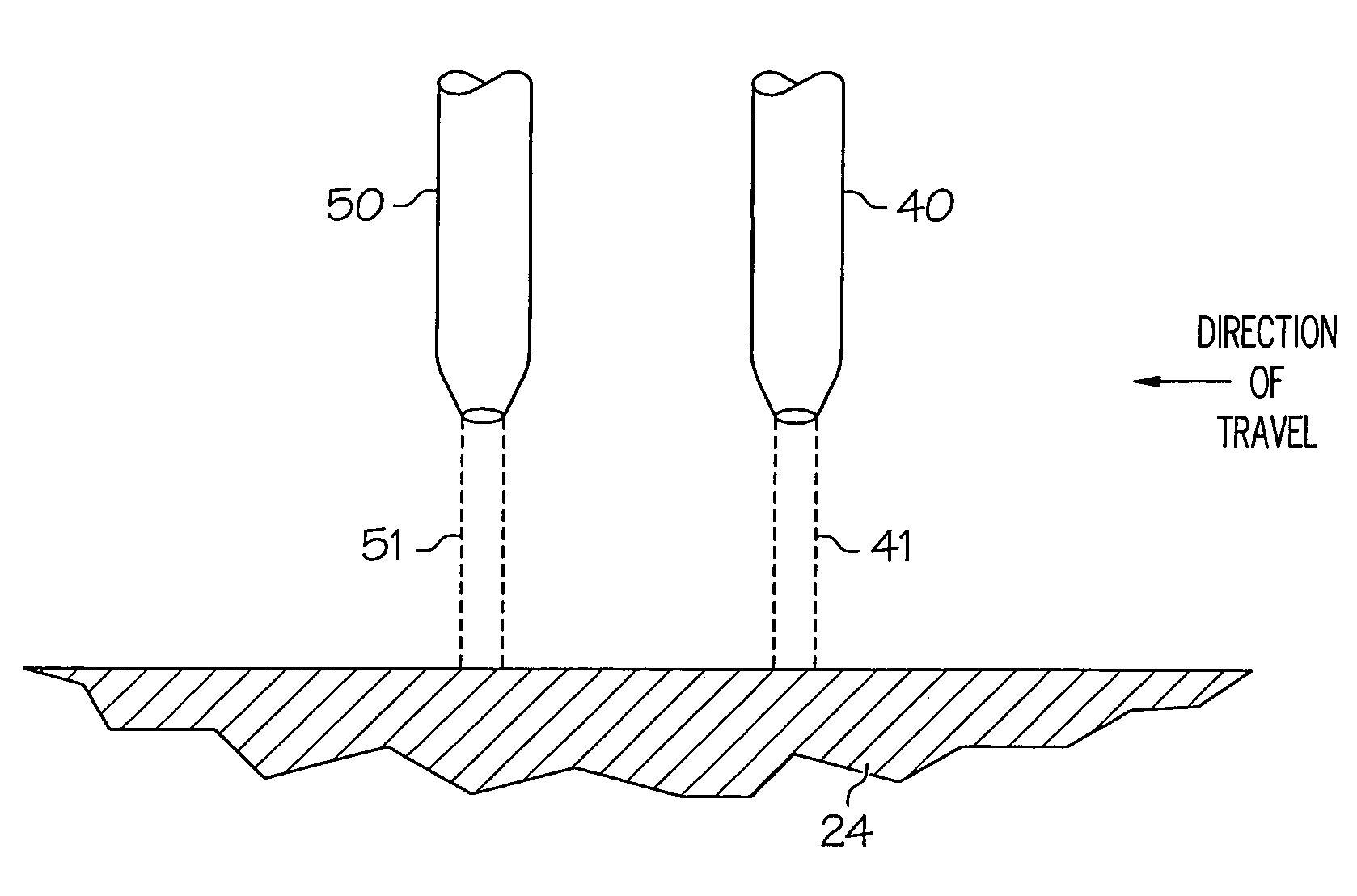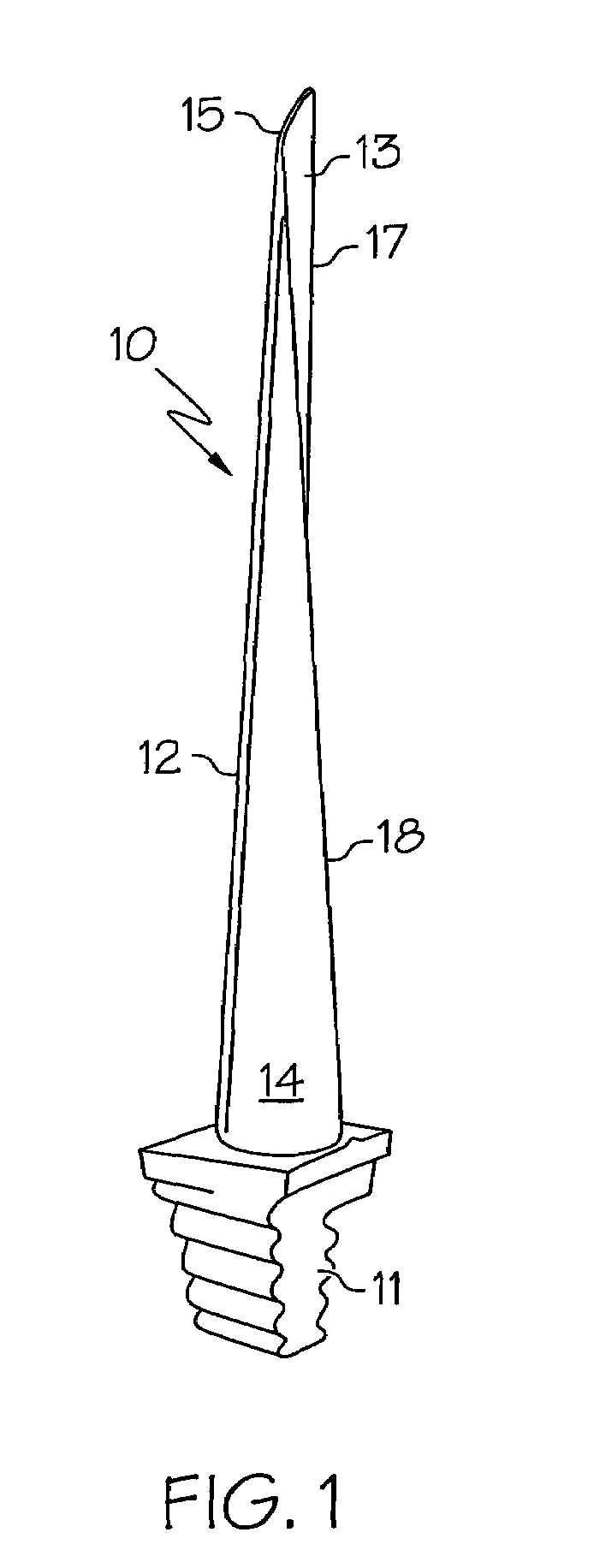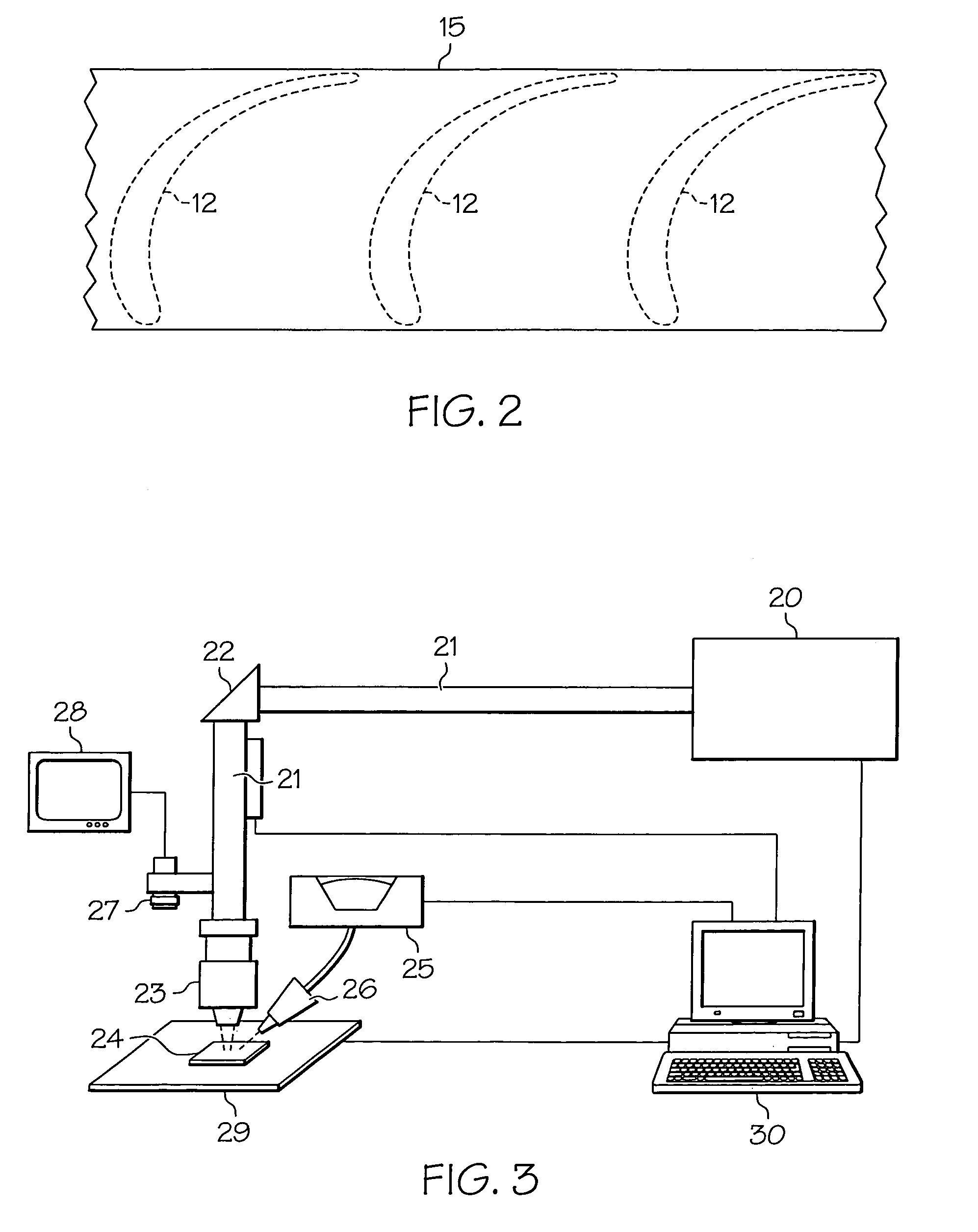Multi-laser beam welding high strength superalloys
a superalloy and multi-laser beam technology, applied in the direction of heat treatment equipment, turbines, furnaces, etc., can solve the problems of increasing the cost of current turbine blades, increasing the cost of superalloy welds, and increasing the cost of superalloy materials. , to achieve the effect of reducing or eliminating weld-induced damage and cost saving
- Summary
- Abstract
- Description
- Claims
- Application Information
AI Technical Summary
Benefits of technology
Problems solved by technology
Method used
Image
Examples
Embodiment Construction
[0025]Reference will now be made in detail to exemplary embodiments of the invention, examples of which are illustrated in the accompanying drawings. Wherever possible, the same reference numbers will be used throughout the drawings to refer to the same or like parts.
[0026]A typical gas turbine blade 10 is illustrated in FIG. 1. Such a blade has different geometry and dimension designs, depending on engine model and its application. For a typical aero-engine, a turbine blade is typically several inches in length. A gas turbine blade includes a serrated base assembly 11, also called a mounting dovetail, tang, or christmas tree, where the blade is affixed to a hub (not shown). In a jet engine assembly multiple such turbine blades are positioned in adjacent circumferential position along a hub or rotor disk. Airfoil 12, a cuplike structure, includes a concave face 13 and a convex face 14. In the literature of turbine technology airfoil 12 may also be referred to as a bucket. Airfoil 12...
PUM
| Property | Measurement | Unit |
|---|---|---|
| distance | aaaaa | aaaaa |
| power | aaaaa | aaaaa |
| diameter | aaaaa | aaaaa |
Abstract
Description
Claims
Application Information
 Login to View More
Login to View More - R&D
- Intellectual Property
- Life Sciences
- Materials
- Tech Scout
- Unparalleled Data Quality
- Higher Quality Content
- 60% Fewer Hallucinations
Browse by: Latest US Patents, China's latest patents, Technical Efficacy Thesaurus, Application Domain, Technology Topic, Popular Technical Reports.
© 2025 PatSnap. All rights reserved.Legal|Privacy policy|Modern Slavery Act Transparency Statement|Sitemap|About US| Contact US: help@patsnap.com



